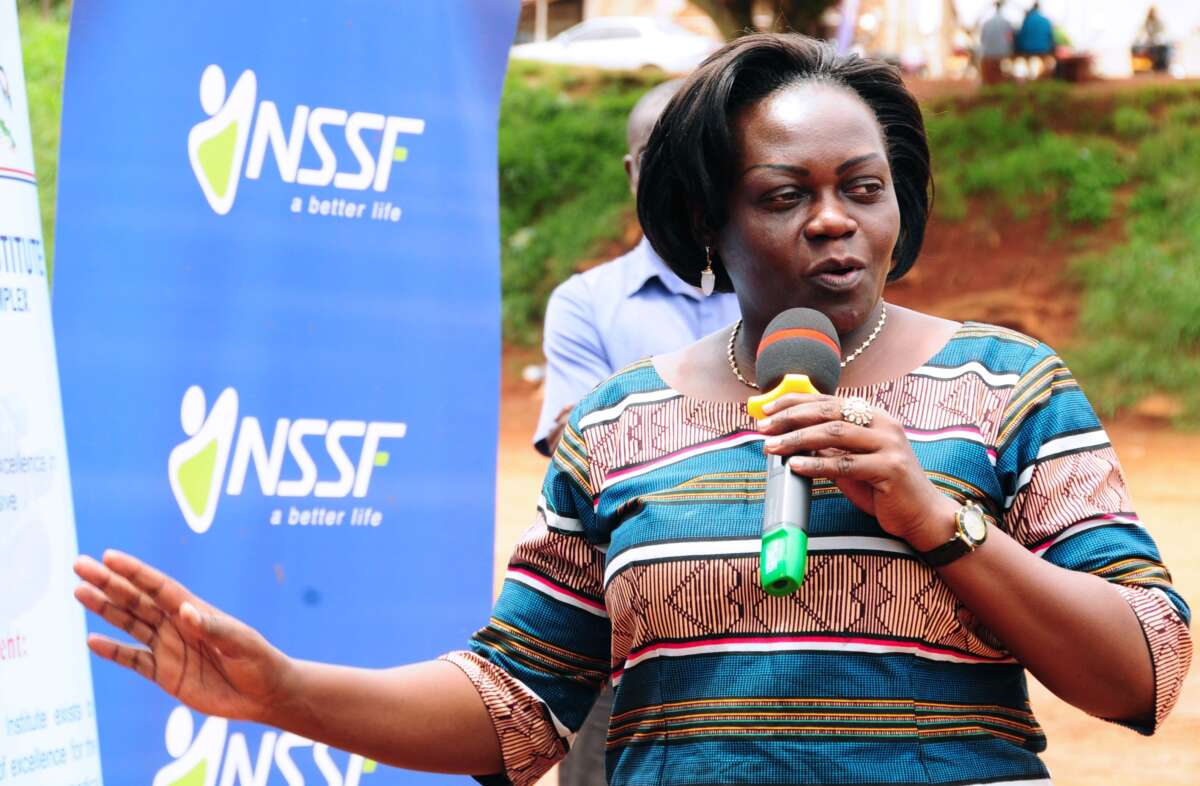The combined effects of cyclones and droughts, worsened by climate change, have led to widespread food insecurity in Malawi. While some adaptation efforts are emerging in this agriculture-dependent country, they have yet to gain traction on a larger scale.
Issued on: 11/11/2024 -
By: Cyrielle CABOT
FRANCE24/AFP


A woman returns from the field, at the Tiyangane irrigation system, on November 3, 2024. © Cyrielle Cabot, FRANCE 24
“I can't stand the taste anymore. But it's this or nothing.” Musamude Binzi slices his mango in half, holding back a wince as he bites into it with full force. For him and all the residents of his village of Kamuga, in the Chikwawa region of southern Malawi, this tropical fruit is the only food they've had access to for over a year. "We boil them, grill them, make porridge, or juice ... We know every way to cook them," the young man said.
For a long time, maize, the staple food in Malawi, filled their plates, harvested directly from the fields around the village. But for two seasons now, those fields have remained barren. "There used to be enough to feed everyone and sell the surplus for income," said Joseph Yona, the village chief. "Now, all our fields are flooded, and the water won’t go down. We can no longer grow anything."
“I can't stand the taste anymore. But it's this or nothing.” Musamude Binzi slices his mango in half, holding back a wince as he bites into it with full force. For him and all the residents of his village of Kamuga, in the Chikwawa region of southern Malawi, this tropical fruit is the only food they've had access to for over a year. "We boil them, grill them, make porridge, or juice ... We know every way to cook them," the young man said.
For a long time, maize, the staple food in Malawi, filled their plates, harvested directly from the fields around the village. But for two seasons now, those fields have remained barren. "There used to be enough to feed everyone and sell the surplus for income," said Joseph Yona, the village chief. "Now, all our fields are flooded, and the water won’t go down. We can no longer grow anything."
From cyclones to droughts
In March 2023, Malawi was hit by Cyclone Freddy, the longest cyclone on record at 36 days. Six months' worth of rain fell in just six days, causing floods and mudslides. About 1,200 people died, and 700,000 were displaced. Two million farmers lost their crops, and 1.4 million livestock perished. The fields around Kamuga were inundated, and water remains present even today.
Read more'We lost everything that day': After Cyclone Freddy, Malawi struggles to rebuild
In November 2023, just a few months after Cyclone Freddy, El Niño struck. This climate phenomenon, characterised by the warming of ocean surface temperatures in the central and eastern Pacific, disrupts typical weather patterns and often results in extreme conditions. It pushed the country – where more than 16 million people rely on rain-fed agriculture – into a historic drought. Some 4.4 million people were still facing food insecurity in spring of this year, according to the UN.
Malawi ranks among the five countries most affected by extreme weather events, according to the Global Climate Risk Index. Rainfall has become increasingly erratic and periods of drought have alternated with five cyclones since 2019.
A crocodile-infested river
For Kamuga’s residents, it has become even more difficult to feed themselves. In this desert-like village, even finding mangoes is a perilous challenge. The few mango trees are located hundreds of metres from homes, near the crocodile-infested Shire River.
In October 2023, Jusa Levison was attacked while picking fruit for his family. "There were four of us. The mangoes were just starting to ripen, so we had to climb the trees to get them," he recalled. "I found a tree with plenty of fruit and left the group to climb up. On my way down, a crocodile attacked me."

Jusa Levison was attacked by a crocodile while picking mangoes to feed his family in the village of Kamuga, Malawi. © Cyrielle Cabot, France 24
The reptile bit his calf as he was putting the precious fruit in a bag. "Luckily, my friends heard me and rushed over with a stick. The crocodile eventually let go, and they took me to the hospital," said the 25-year-old. Nearby villages reported two other attacks, with one man and a 15-year-old boy losing their lives.
As Jusa shares his story, children as young as 10 walk by, carrying jute sacks filled with green mangoes – provisions that will last for about two days. "We know the danger, but we have no choice," said Yona, the village chief. "In about a month, the mango season will end. I don’t know how we’re going to manage."
Some families have already started collecting water lily tubers from nearby streams. These are eaten peeled, cut into pieces, or dried and ground. A food that is "without taste and certainly without vitamins", the chief said, "but which can prevent us from dying of hunger".
Diverting water from rivers
A few kilometres downstream, the repeated environmental disasters drove the village of Nsomo to act. "We experienced severe floods in 2016 that destroyed many homes and fields," said Alfred Mbalame, a member of the local disaster management committee. "We had to move the village a little further away and rebuild ourselves."
In the years that followed, these episodes became more frequent. "We then came up with the idea of replanting trees near the riverbed to protect ourselves," Mbalame said.
The trees in question were gradually cut down to be sold, as more and more Malawians turned to the sale of wood and charcoal for financial survival, an illegal activity that fuels deforestation and ultimately exacerbates vulnerability to extreme weather. Without trees, the soil loses its ability to absorb water, erodes, and becomes prone to flooding and mudslides. By 1992, Malawi had lost more than half of its forests, and it is now losing an additional 0.63% annually, according to government figures.
"We soon realised this wasn’t enough," Alfred continued. In 2023, the risk management committee came up with a new idea: building a dyke to divert water during heavy rains and protect the village and fields.
The project, funded by the Danish NGO DanChurchAid at 6.5 million Malawian kwacha (approximately €3,500), was launched a year later. "It was a big challenge to do this with such a small budget," said Charles Herbat Mandafzuwa, an engineer and village member. He designed cost-effective plans, sourced materials, and hired local artisans and villagers. In just 30 days, the dyke was completed.
The reptile bit his calf as he was putting the precious fruit in a bag. "Luckily, my friends heard me and rushed over with a stick. The crocodile eventually let go, and they took me to the hospital," said the 25-year-old. Nearby villages reported two other attacks, with one man and a 15-year-old boy losing their lives.
As Jusa shares his story, children as young as 10 walk by, carrying jute sacks filled with green mangoes – provisions that will last for about two days. "We know the danger, but we have no choice," said Yona, the village chief. "In about a month, the mango season will end. I don’t know how we’re going to manage."
Some families have already started collecting water lily tubers from nearby streams. These are eaten peeled, cut into pieces, or dried and ground. A food that is "without taste and certainly without vitamins", the chief said, "but which can prevent us from dying of hunger".
Diverting water from rivers
A few kilometres downstream, the repeated environmental disasters drove the village of Nsomo to act. "We experienced severe floods in 2016 that destroyed many homes and fields," said Alfred Mbalame, a member of the local disaster management committee. "We had to move the village a little further away and rebuild ourselves."
In the years that followed, these episodes became more frequent. "We then came up with the idea of replanting trees near the riverbed to protect ourselves," Mbalame said.
The trees in question were gradually cut down to be sold, as more and more Malawians turned to the sale of wood and charcoal for financial survival, an illegal activity that fuels deforestation and ultimately exacerbates vulnerability to extreme weather. Without trees, the soil loses its ability to absorb water, erodes, and becomes prone to flooding and mudslides. By 1992, Malawi had lost more than half of its forests, and it is now losing an additional 0.63% annually, according to government figures.
"We soon realised this wasn’t enough," Alfred continued. In 2023, the risk management committee came up with a new idea: building a dyke to divert water during heavy rains and protect the village and fields.
The project, funded by the Danish NGO DanChurchAid at 6.5 million Malawian kwacha (approximately €3,500), was launched a year later. "It was a big challenge to do this with such a small budget," said Charles Herbat Mandafzuwa, an engineer and village member. He designed cost-effective plans, sourced materials, and hired local artisans and villagers. In just 30 days, the dyke was completed.

Charles Herbat Mandafzuwa shows the dam he helped build in Nsomo, Malawi, on November 3, 2024. © Cyrielle Cabot, France 24
Today, rows of perfectly aligned trees now obscure the two small stone walls that run along the dry riverbed. Though they reassure the village as the rainy season approaches, much work remains.
"These walls should be longer and higher, and sandbags should be installed in the middle. But we’ve run out of money," the engineer admitted, estimating another 20 million kwacha (10,780 euros) are needed to finish the project. "Honestly, it may not hold during severe rains. Let’s hope it will limit the damage."
Diversifying crops
Davi Tsoka has pursued his own solutions for adapting to the new climate challenges. For two years, he has diversified his crops to ensure at least some harvest each season.
"In 2016, floods destroyed my home and fields, forcing my family and I to relocate. Since then, every year has brought either drought or flood. We’ve never had a normal harvest again," said the 45-year-old. Previously, he managed to harvest about 16 bags of corn annually; now, he barely fills one.
Today, rows of perfectly aligned trees now obscure the two small stone walls that run along the dry riverbed. Though they reassure the village as the rainy season approaches, much work remains.
"These walls should be longer and higher, and sandbags should be installed in the middle. But we’ve run out of money," the engineer admitted, estimating another 20 million kwacha (10,780 euros) are needed to finish the project. "Honestly, it may not hold during severe rains. Let’s hope it will limit the damage."
Diversifying crops
Davi Tsoka has pursued his own solutions for adapting to the new climate challenges. For two years, he has diversified his crops to ensure at least some harvest each season.
"In 2016, floods destroyed my home and fields, forcing my family and I to relocate. Since then, every year has brought either drought or flood. We’ve never had a normal harvest again," said the 45-year-old. Previously, he managed to harvest about 16 bags of corn annually; now, he barely fills one.

A farmer in Malawi, Davi Tsoka, has tried to diversify his crops in an effort to overcome food insecurity. © Cyrielle Cabot, France 24
In addition to maize, he now alternates crops depending on the time of the year, including soybeans, which thrive in dry conditions, and rice, which grows in wet areas, as well as peas. "My grandparents used to grow soya and they passed on their knowledge to me. As for rice, I went to observe farmers in the region who were already growing it to learn all about it," he said.
Yet, given the severity of the weather events, the farmer admitted he still struggled to get by. "Almost nothing grows despite everything, because it's too dry or too wet," he said, noting he only managed to harvest enough rice to survive in 2024. "But it's better than nothing."
The maize he planted in October wilted a month later due to the delayed rainy season, and the crops planted in December didn’t survive February’s drought.
Tsoka’s approach aligns with recommendations from the Malawian ministry of agriculture, which has called on farmers to plant drought-resistant and early-maturing crops.
While Tsoka is among the fortunate ones able to follow these recommendations, early warnings often do not reach the most rural and vulnerable communities, such as Kamuga. Even when they do, many are unable to act, as farmers remain financially weakened by the most recent disaster.
‘I was able to buy a house, livestock, and a moped’
Several kilometres from Nsamo, in the Nsanje district, near Tiyangane, a stark contrast emerges. Unlike the empty fields around Kamuga, the lanes are green and full of lettuce. Long stalks of corn have just been harvested and onions are beginning to sprout. It’s the end of the day, and women are either ploughing the land or returning to the village smiling, tools in hand.
In addition to maize, he now alternates crops depending on the time of the year, including soybeans, which thrive in dry conditions, and rice, which grows in wet areas, as well as peas. "My grandparents used to grow soya and they passed on their knowledge to me. As for rice, I went to observe farmers in the region who were already growing it to learn all about it," he said.
Yet, given the severity of the weather events, the farmer admitted he still struggled to get by. "Almost nothing grows despite everything, because it's too dry or too wet," he said, noting he only managed to harvest enough rice to survive in 2024. "But it's better than nothing."
The maize he planted in October wilted a month later due to the delayed rainy season, and the crops planted in December didn’t survive February’s drought.
Tsoka’s approach aligns with recommendations from the Malawian ministry of agriculture, which has called on farmers to plant drought-resistant and early-maturing crops.
While Tsoka is among the fortunate ones able to follow these recommendations, early warnings often do not reach the most rural and vulnerable communities, such as Kamuga. Even when they do, many are unable to act, as farmers remain financially weakened by the most recent disaster.
‘I was able to buy a house, livestock, and a moped’
Several kilometres from Nsamo, in the Nsanje district, near Tiyangane, a stark contrast emerges. Unlike the empty fields around Kamuga, the lanes are green and full of lettuce. Long stalks of corn have just been harvested and onions are beginning to sprout. It’s the end of the day, and women are either ploughing the land or returning to the village smiling, tools in hand.

Farmers work in the fields of the Tiyangane irrigation system in Malawi, on November 3, 2024. © Cyrielle Cabot, France 24
Since 2020, this area has flourished into a small Garden of Eden, sheltered from the many problems facing other Malawian farmers. This is due to the fact that it benefits from a rare technology in Malawi: an irrigation system. "This has changed everything for us. Without it, the situation wouldn't be the same at all," said Medison Govati, who led the project.
The farmers cultivating these nine hectares of arable land harvest maize, vegetables and onions three times a year. "We prioritise maize to make sure we can feed everyone, and then we sell the other crops," Govati explained. "With this money, the 105 people who live off these fields have been able to build a house, buy a moped or cattle. It's exceptional." Govati himself now has two homes, a moped and 10 animals. Before, he barely survived by selling charcoal.
While successful, this project, also funded by DanChurchAid, raised a lot of questions at first. Many village chiefs wanted to use the funds for immediate needs like livestock or food. "One chief insisted we try it after seeing it in northern countries," Govati recounted.
"We'd never seen anything like it in the region, so it was a real gamble."
Govati said the project has been such a success that it has even stirred envy and conflict with neighbouring villages.
But promising as these strategies are, they all suffer from the same shortfall: funding. Following Cyclone Freddy, the government launched a $16 million, five-year initiative to help 10,000 households develop resilient livelihoods through beekeeping, mushroom farming and brick-making. The World Food Programme has also helped 118,000 households adapt to climate change through crop diversification, reforestation and solar irrigation.
Govati acknowledged that lack of funding is the main limitation of the irrigation system project. "It's difficult not to be able to help more people. We would very much like to be able to expand the irrigation system, but that would require much more funding."
This article has been translated from the original in French.
Since 2020, this area has flourished into a small Garden of Eden, sheltered from the many problems facing other Malawian farmers. This is due to the fact that it benefits from a rare technology in Malawi: an irrigation system. "This has changed everything for us. Without it, the situation wouldn't be the same at all," said Medison Govati, who led the project.
The farmers cultivating these nine hectares of arable land harvest maize, vegetables and onions three times a year. "We prioritise maize to make sure we can feed everyone, and then we sell the other crops," Govati explained. "With this money, the 105 people who live off these fields have been able to build a house, buy a moped or cattle. It's exceptional." Govati himself now has two homes, a moped and 10 animals. Before, he barely survived by selling charcoal.
While successful, this project, also funded by DanChurchAid, raised a lot of questions at first. Many village chiefs wanted to use the funds for immediate needs like livestock or food. "One chief insisted we try it after seeing it in northern countries," Govati recounted.
"We'd never seen anything like it in the region, so it was a real gamble."
Govati said the project has been such a success that it has even stirred envy and conflict with neighbouring villages.
But promising as these strategies are, they all suffer from the same shortfall: funding. Following Cyclone Freddy, the government launched a $16 million, five-year initiative to help 10,000 households develop resilient livelihoods through beekeeping, mushroom farming and brick-making. The World Food Programme has also helped 118,000 households adapt to climate change through crop diversification, reforestation and solar irrigation.
Govati acknowledged that lack of funding is the main limitation of the irrigation system project. "It's difficult not to be able to help more people. We would very much like to be able to expand the irrigation system, but that would require much more funding."
This article has been translated from the original in French.













 Simple actions like checking in on someone, offering a listening ear or pointing a colleague toward professional resources can have a lasting impact. (Shutterstock)
Simple actions like checking in on someone, offering a listening ear or pointing a colleague toward professional resources can have a lasting impact. (Shutterstock)

